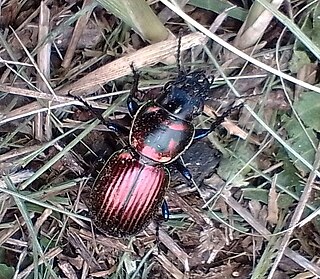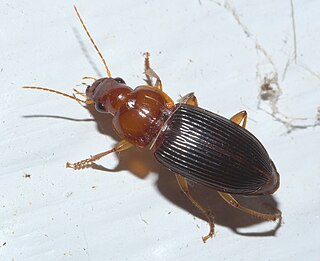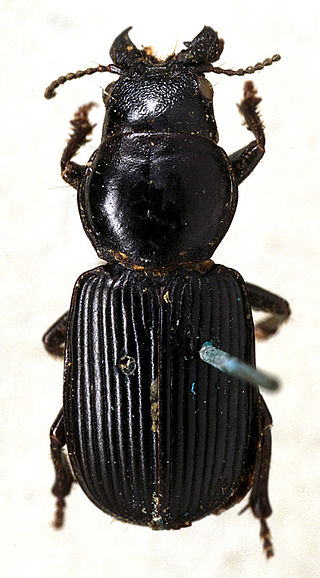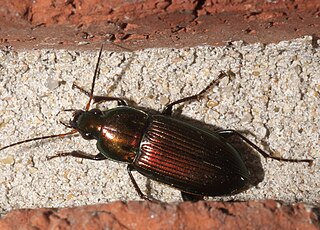
The Dytiscidae – based on the Greek dytikos (δυτικός), "able to dive" – are the predaceous diving beetles, a family of water beetles. They occur in virtually any freshwater habitat around the world, but a few species live among leaf litter. The adults of most are between 1 and 2.5 cm (0.4–1.0 in) long, though much variation is seen between species. The European Dytiscus latissimus and Brazilian Megadytes ducalis are the largest, reaching up to 4.5 cm (1.8 in) and 4.75 cm (1.9 in) respectively. In contrast, the smallest is likely the Australian Limbodessus atypicali of subterranean waters, which only is about 0.9 mm (0.035 in) long. Most are dark brown, blackish, or dark olive in color with golden highlights in some subfamilies. The larvae are commonly known as water tigers due to their voracious appetite. They have short, but sharp mandibles and immediately upon biting, they deliver digestive enzymes into prey to suck their liquefied remains. The family includes more than 4,000 described species in numerous genera.

Mecodema is a genus of large flightless ground beetle (Carabidae) endemic to New Zealand. The genus is very diverse in comparison to the other three New Zealand genera within the subtribe Nothobroscina. Mecodema is geographically widespread across both the North and South Islands, as well as numerous offshore islands, including the Three Kings Is., Poor Knights Is., Aotea and Hauturu, Kapiti Is., Stephens Is., Stewart Is., Chatham Is., Snares Is.

Anthiinae is a subfamily of beetles in the family Carabidae, containing the following genera:

Baripus is a genus of in the beetle family Carabidae. There are more than 20 described species in Baripus, found in South America.
Cerotalis is a genus in the beetle family Carabidae. There are about seven described species in Cerotalis, found in Australia.

Notiobia is a genus of ground beetles in the family Carabidae. There are about 100 described species in Notiobia.

Orthogoniinae is a subfamily of ground beetles. Occasionally it was treated as a tribe Orthogoniini of subfamily Harpalinae, particularly when this was circumscribed loosely.

Craspedophorus is a genus in the beetle family Carabidae. There are more than 160 described species in Craspedophorus.

Platyninae is a subfamily of ground beetles.

Psydrinae is a subfamily of beetles in the family Carabidae.

Cnemalobus is a genus in the beetle family Carabidae. There are more than 40 described species in Cnemalobus, found in South America.

Morion is a genus of in the beetle family Carabidae. There are more than 40 described species in Morion.

Scaritinae is a large subfamily of beetles in the family Carabidae, containing more than 2400 species in over 140 genera. They are found worldwide.

Bembidiini is a tribe of ground beetles in the family Carabidae. There are more than 120 genera and 3,100 described species in Bembidiini.

Harpalini is a tribe of a diverse group of ground beetles belonging to the subfamily Harpalinae within the broader family Carabidae. The tribe contains more than 1,900 species.

Lebiini is a tribe of ground beetles in the family Carabidae. There are more than 250 genera and 4,800 described species in Lebiini.

Dytiscinae is a subfamily of predaceous diving beetles in the family Dytiscidae. There are at least 20 genera and 380 described species in Dytiscinae.

Pterostichini is a tribe of ground beetles in the subfamily Harpalinae. There are about 180 genera and more than 3,800 described species in Pterostichini.
Promecoderus is a genus of ground beetle in the subfamily Broscinae. The genus was described by Pierre François Marie Auguste Dejean in 1829 with the genus being found in Australia and is divided into six groups with several subgroups:

















